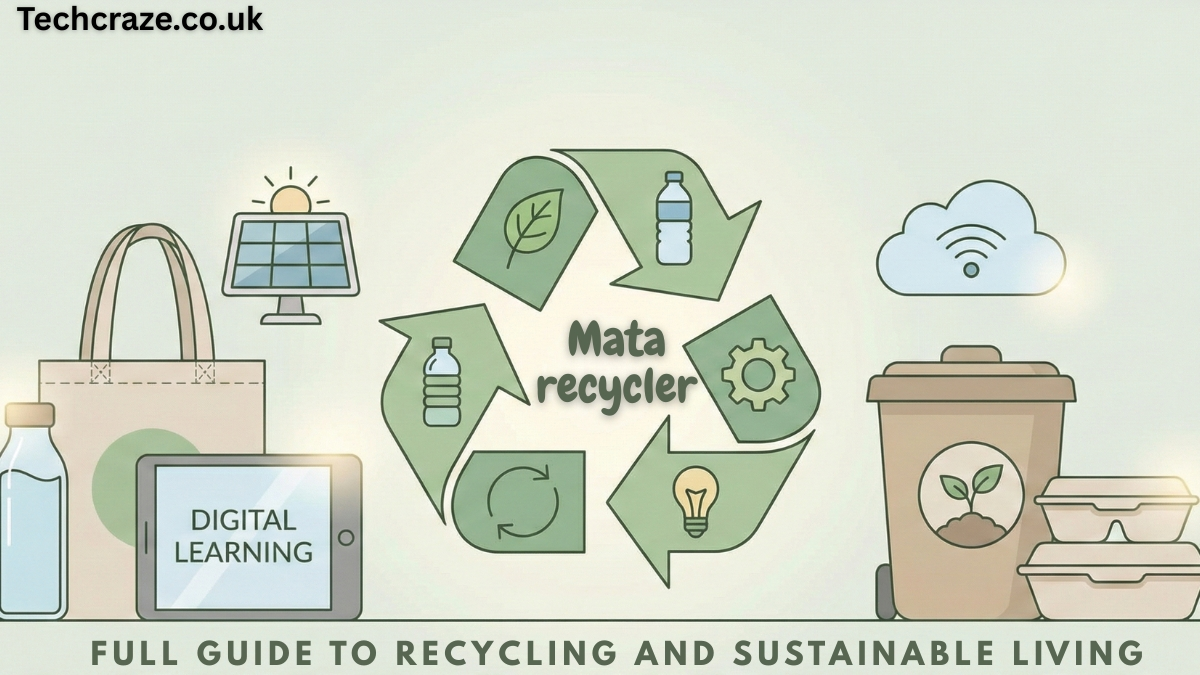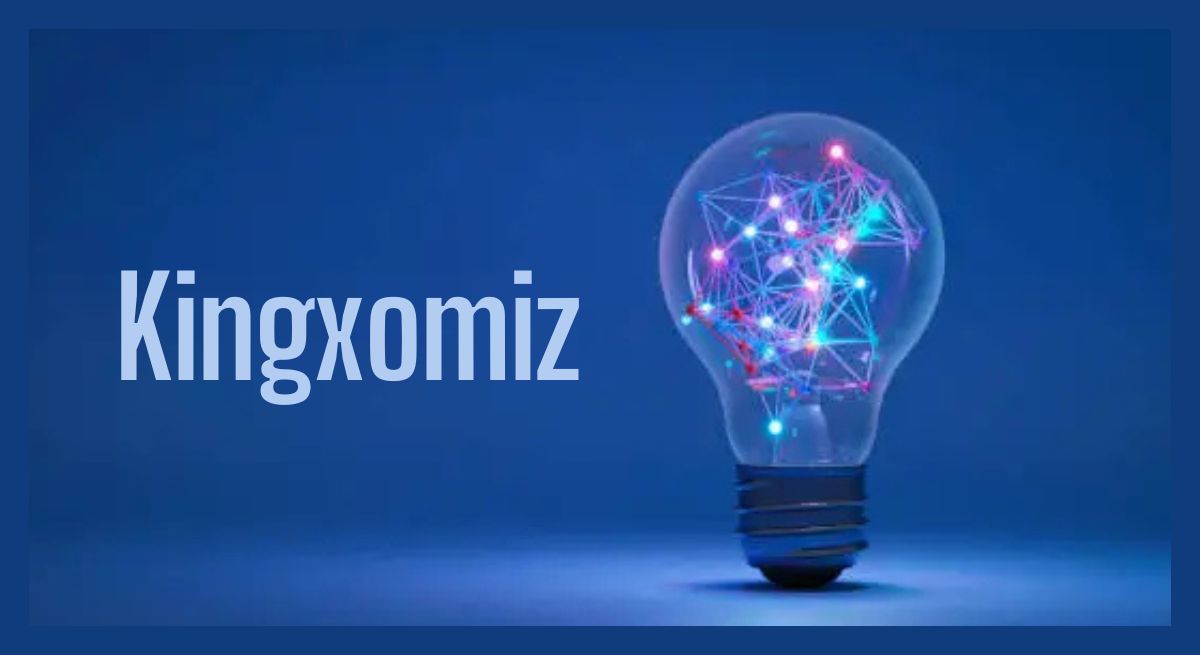Guides
The Ultimate Guide to Wood Flooring

Wood flooring has been a timeless choice for homeowners and interior designers alike. Its natural beauty, warmth, and durability make it a preferred option for residential and commercial spaces. Whether you’re looking for a classic hardwood look or a modern engineered wood style, this guide will help you navigate through all aspects of wood flooring, from selection to maintenance.
Types of Wood Flooring
Wood flooring comes in several types, each with its own advantages.
Solid hardwood is made from a single piece of wood and is known for its durability. It can be sanded and refinished multiple times, making it a long-lasting choice.
This type consists of multiple layers of wood veneer bonded together. It’s more resistant to moisture and temperature changes compared to solid hardwood, making it a great option for basements and humid areas.
Reclaimed Wood Flooring
Eco-conscious homeowners opt for reclaimed wood flooring, which is sourced from old buildings and repurposed into flooring material. This type of flooring provides a rustic and environmentally friendly option.
Benefits of Wood Flooring
Wood flooring offers several advantages:
Durability: With proper care, wood flooring can last for decades.
Aesthetic Appeal: Offers a timeless and luxurious look that enhances the beauty of any space.
Increased Property Value: Homes with wood flooring tend to sell at higher prices, making it a worthwhile investment.
Choosing the Right Wood Flooring for Your Home
When selecting wood flooring, consider:
- Room Traffic: High-traffic areas require harder wood species like oak or maple.
- Climate: Some wood species handle humidity better than others.
- Budget: Prices vary based on wood type and quality.
Wood Flooring Finishes
Choosing the right finish impacts both the look and longevity of your floors:
Oil-Based Finishes: Provide a deep, rich color but require a longer drying time.
Water-Based Finishes: Fast-drying and environmentally friendly.
Matte vs. Glossy Finishes: Matte hides scratches better, while glossy provides a shiny appearance.
Installation Methods
Wood flooring can be installed in different ways:
Nail-Down: Best for solid hardwood.
Glue-Down: Often used for engineered wood.
Floating Installation: Suitable for DIY projects and certain engineered floors.
Wood Flooring Maintenance Tips
To keep your floors in top condition:
Sweep and mop regularly to prevent dirt buildup.
Use furniture pads to avoid scratches.
Avoid excessive moisture to prevent warping and damage.
Cost of Wood Flooring
Wood flooring prices vary depending on species and quality. Solid hardwood tends to be more expensive than engineered wood. Additionally, installation costs depend on the method used and the region.
- Scratches and Dents: Can be prevented by using rugs and furniture pads.
- Moisture Damage: Avoid excessive water exposure and clean spills immediately.
- Fading: Use window treatments to minimize sun exposure and protect the wood.
- How to Restore and Refinish Wood Flooring
- Over time, wood floors may need refinishing. Knowing when and how to restore them is essential:
- When to Refinish: If floors look dull, scratched, or worn out.
- DIY vs. Professional: DIY refinishing is cost-effective, but professional services ensure a flawless finish.
Wood Flooring vs. Other Flooring Options
Wood vs. Laminate: Laminate is cheaper but lacks the authenticity and durability of real wood.
Wood vs. Vinyl: Vinyl is waterproof, but wood offers better resale value.
Wood vs. Tile: Tile is more durable in wet areas but lacks the warmth and character of wood.
Eco-Friendly and Sustainable Wood Flooring Options
For those looking for sustainable flooring choices:
FSC-Certified Wood: Ensures responsible sourcing.
Reclaimed Wood: Repurposed from old structures, reducing environmental impact.
Bamboo and Cork: Renewable resources with unique aesthetics.
Trendy Wood Flooring Designs in 2024
Wide Plank Flooring: Creates a more spacious look.
Distressed and Hand-Scraped Styles: Adds character and a rustic touch.
Unique Wood Stains: Offers custom color options for a personalized look.
Conclusion
Wood flooring is a beautiful and long-lasting investment that enhances the look and value of any home. With various types, finishes, and designs to choose from, there is a perfect wood flooring option for every space. Proper maintenance and the right selection ensure your floors stay stunning for years to come.
Guides
What Is Adsy.pw/HB5? Full Guide for Bloggers and Marketers

Success in digital marketing depends on choosing the right platform, strategy and tools. Adsy.pw/HB5 is one of those landing pages often used by web publishers, bloggers, brand owners and marketers for link sharing, promotions or redirecting traffic toward specific offers. Many people think it is just a URL shortener, but in reality it plays a bigger role. It helps increase traffic, improve conversions and guide targeted visitors from one point to another.
In today’s online world, link management has become essential. A page like Adsy.pw/HB5 allows users to send traffic to a specific destination using a single short link. Whether it is an affiliate offer, a software download, an online tool or a marketing campaign, this type of page helps guide users toward what you want them to see.
If you work in online earning, blogging, marketing or traffic management, understanding how Adsy.pw/HB5 functions can be helpful. In this article, we’ll explore what it is, how it works and why people use it.
What Is the Main Purpose of Adsy.pw/HB5?
Pages like Adsy.pw/HB5 usually act as redirection or bridge pages. Their main purpose is to provide a clean, simple and secure link that takes users from one platform to another. This becomes especially useful when you don’t want to share long URLs repeatedly across social media, blog posts or ads.
Many marketers also use such links for affiliate marketing. A short bridge page helps with tracking, pre-selling and managing click performance. It gives marketers a clear picture of where traffic came from, which link performed well and which offer converted.
These pages also serve as pre-landing or bridge pages. A user sees a small introduction or message before reaching the main offer. This improves user flow and creates a smoother journey.
How Does Adsy.pw/HB5 Work?
Short-link systems like this take your original URL, compress it into a shorter version and send users through a quick redirect page. When someone clicks the link, they briefly land on the bridge page before being taken to the final destination. This process helps the platform track each click.
Another advantage is that short links are much easier to share. Compact URLs look cleaner on social media and usually get more engagement. They are also suitable for performance tracking because each click, source and referral can be recorded.
For affiliate offers, this becomes even more helpful. Long affiliate links can appear suspicious, but a clean short link builds trust. With more trust comes a higher click-through rate.
Who Can Benefit From Using Adsy.pw/HB5?
Bloggers and content creators benefit the most from such tools. Their posts often contain multiple links, so a clean, short link improves presentation and user experience. It also gives them more control over the user journey.
Affiliate marketers rely heavily on short links. Their original URLs contain tracking IDs, parameters and codes that make them look messy. Short links keep things neat and professional.
Brands running social media campaigns also use these links. By sharing shorter URLs, they can track traffic sources and analyze which platform performs better. This helps them make smarter marketing decisions.
How Adsy.pw/HB5 Helps With SEO
Many people assume short links do not contribute to SEO, but they actually support your strategy in indirect yet meaningful ways. For example, when users see a clean link on social media, they are more likely to click it. Higher engagement helps improve overall visibility.
Bridge pages guide users smoothly from point A to point B. Better user flow leads to improved on-site metrics like time spent on page and reduced bounce rate. These positive signals make search engines view your content more favorably.
Short links also help consolidate traffic from different platforms into one destination. This gives you more accurate analytics, allowing smarter SEO decisions supported by reliable data.
Benefits of Using Adsy.pw/HB5
The biggest benefit is the clean presentation. Long URLs can look confusing, while shorter ones are easy to understand at a glance.
Tracking is another major advantage. These platforms usually collect click-through data, referral sources and geographic information. This helps you identify which region or audience is most engaged with your link.
There is also a security benefit. Some short-link systems filter out malicious or unsafe links, making the redirect process safer for users. Marketers are often more confident when using such tools.
The Role of Adsy.pw/HB5 in Affiliate Marketing
Affiliate marketers frequently use short links because their original URLs contain long tracking details. A short link makes everything look organized and trustworthy.
Short links generally perform better on social media. Users trust them more and feel less concerned about spam. As a result, click-through rates improve.
Marketers also use these short links as part of their pre-sell funnel. A bridge page prepares users before showing them the main product page. This strategy increases conversions and improves overall performance.
Is Adsy.pw/HB5 Safe to Use?
Platforms like Adsy.pw/HB5 are typically created for digital marketing and link management. They usually do not collect personal data; they only track clicks for analysis. This is why they are widely used among marketers.
As long as the final destination link is credible and safe, the short link remains secure to use. Even so, it is always wise to know where a link is redirecting before clicking.
For most online users and marketers, such platforms are considered safe and reliable.
Should You Use Adsy.pw/HB5?
If you are a blogger, marketer, affiliate promoter or someone who shares links frequently, this type of tool can improve your workflow. It helps you share clean, trackable and professional-looking URLs.
If you receive traffic from multiple sources, you’ll find the analytics especially helpful. The data helps you make better marketing decisions, especially when running paid ads.
Even if your only goal is to simplify your links, Adsy.pw/HB5 still serves the purpose well. Short links are always easier to share and usually perform better.
Conclusion
Short-link pages like Adsy.pw/HB5 play an important role in digital marketing. They organize traffic, increase click-through rates and help affiliate marketers manage their campaigns more effectively. They are useful not only for social media but also for blogging, email marketing and online promotions.
If you work online, tools like these can streamline your process. They help guide users more efficiently, provide better data and improve your results.
FAQs
What exactly is Adsy.pw/HB5?
Adsy.pw/HB5 is a short-link and redirect page commonly used by bloggers, marketers and affiliate promoters. It helps route traffic from a simple link to a target page while tracking clicks and performance.
Is Adsy.pw/HB5 safe to use?
Yes, it is generally safe. It only redirects the user and tracks clicks. As long as the final destination website is legitimate, the link is safe for users.
Why do marketers use Adsy.pw/HB5?
Marketers prefer it because short links look clean, get more clicks, and allow better tracking. It also helps build trust and improve conversion rates across social media and campaigns.
Can Adsy.pw/HB5 improve SEO?
Indirectly, yes. It improves user engagement, reduces link clutter and gives better analytics. These factors help you optimize your overall marketing strategy, which supports SEO.
How does Adsy.pw/HB5 help affiliate marketers?
Affiliate links are usually long and messy. Adsy.pw/HB5 simplifies them into clean, shareable links. This boosts click-through rate and helps track which offers perform best.
Guides
Matarecycler: Full Guide to Recycling and Sustainable Living

Matarecycler is known as an online platform focused on recycling awareness, sustainable practices, and digital tools that support waste management. Many users visit the site because they want quick access to recycling information or services. The name itself suggests a mix of “material” and “recycling,” which aligns with the site’s main purpose.
Although people discover it for different reasons, the core idea remains the same. Matarecycler aims to promote responsible waste handling using simple, accessible information. This makes it useful for households, students, small businesses, and anyone looking to reduce their environmental impact.
The platform stands out because it tries to simplify concepts that often feel complex. Recycling systems can be confusing, but websites like Matarecycler make the subject easier to understand for everyone.
What Matarecycler Offers
One of the first things visitors notice is that Matarecycler focuses on education. The site highlights various recycling practices and offers tips you can apply in daily life. Its articles cover materials like plastic, paper, glass, electronic waste, and metals. Each category is explained in simple terms, which helps both beginners and experienced recyclers.
Another key offering is guidance on reducing waste. Instead of focusing only on recycling, the platform encourages people to rethink consumption habits. This includes simple steps like reusing items, avoiding unnecessary packaging, and choosing long-lasting products.
The website also introduces eco-friendly tools and products. It may recommend apps, gadgets, or local services that help users stay on track with their sustainability goals. This blend of education and practical support is what makes the platform useful.
Why Recycling Platforms Like Matarecycler Matter
The world produces more waste now than at any point in history. With plastic pollution, overflowing landfills, and climate concerns, platforms like Matarecycler play an important role. They raise awareness at a time when it’s desperately needed. Even small actions can have a large impact when done consistently and collectively.
These platforms bridge the knowledge gap. Many people want to recycle but are unsure how to do it correctly. Matarecycler helps solve this by offering clear guidance and breaking down complicated topics into easy steps.
Finally, digital recycling sites encourage responsible habits. The more people learn, the more likely they are to make better choices. This creates a ripple effect in homes, workplaces, and communities. Over time, small changes lead to meaningful environmental benefits.
How Matarecycler Promotes Sustainable Living
Sustainable living isn’t only about recycling, and Matarecycler understands that. That’s why the platform highlights lifestyle improvements that reduce waste before it’s created. These include mindful shopping, responsible disposal, and using eco-friendly products whenever possible.
The content often encourages readers to adopt long-term habits. For example, using reusable bags, choosing durable containers, or repairing electronics instead of discarding them. These tips are simple and practical, which makes them easy to apply.
The platform also touches on environmental benefits. It explains how a sustainable lifestyle helps conserve natural resources, reduce carbon footprint, and limit pollution. When readers understand the impact of their choices, they feel more motivated to act.
Matarecycler’s Role in Digital Education
Education is a major strength of the site. Many of its visitors come from schools or learning communities where environmental topics are part of the curriculum. Matarecycler’s simple explanations make it useful for teachers, students, and researchers.
The platform promotes learning through real-world examples. It shows how recycling works in different parts of the world and explains why some materials are easier to process than others. This variety keeps the content engaging.
Another educational benefit is accessibility. Anyone with an internet connection can explore the content, which helps spread awareness globally. Digital learning plays a major role in shaping future generations, and platforms like Matarecycler contribute to this effort.
How Businesses Can Use Matarecycler
Businesses also benefit from platforms like Matarecycler. The site provides valuable insights for companies that want to adopt greener practices. Small businesses, in particular, look for ways to cut waste and lower operating costs. Recycling and sustainable methods help achieve both.
Some businesses use the platform to train their staff on proper waste sorting. This reduces errors and improves overall efficiency. The site’s simple explanations make it easy for everyone to understand what goes where.
Additionally, companies that care about sustainability often use such platforms to support marketing or compliance efforts. Customers appreciate brands that prioritize the environment. This makes recycling knowledge more valuable than ever.
The Future of Recycling Platforms
Recycling platforms are growing quickly as the world turns to digital solutions. Matarecycler is part of a trend where technology and sustainability meet. With more people caring about the environment, such platforms will continue to gain traction.
Future updates may include interactive tools, recycling locators, AI-powered suggestions, or community forums. As technology evolves, users will get more personalized and efficient guidance.
The major expectation is that awareness will continue rising. When knowledge becomes accessible, people take better actions. Platforms like Matarecycler help set the foundation for a cleaner future.
How Matarecycler Supports Environmental Responsibility
Environmental responsibility begins with small choices. Matarecycler encourages people to rethink their daily habits and choose smarter alternatives. Even something as simple as separating waste correctly can make a difference.
The platform highlights that everyone has a role to play. Whether you’re a student, a business owner, or a parent, your choices shape your surroundings. By providing clear guidance, the website helps people take those steps with confidence.
Above all, the message is simple: sustainability is a shared responsibility. When communities work together, long-term progress becomes possible.
Conclusion
Matarecycler serves as a helpful resource for anyone who wants to understand recycling and sustainable living. It simplifies complicated topics and turns them into practical steps. This makes it valuable for individuals, educators, and businesses alike.
With global waste increasing, platforms like Matarecycler offer a clear path forward. They encourage better habits and provide tools that support a greener future.
FAQs
What is Matarecycler?
Matarecycler is an online platform that shares recycling information, waste management tips, and sustainability guidance.
Who can use Matarecycler?
Students, households, small businesses, and anyone interested in responsible waste handling can benefit from the site.
Does Matarecycler provide recycling tips?
Yes. The platform offers simple and practical advice on sorting waste, reducing consumption, and choosing eco-friendly alternatives.
Is Matarecycler helpful for businesses?
Many small businesses use the platform to understand best practices and train employees on sustainable waste handling.
Why are recycling platforms important?
They make environmental knowledge accessible and help people make better choices that protect the planet.
Guides
Fontlu: Free Stylish Fonts for Every Creative Project

“Fontlu, a popular site for downloading free fonts and exploring modern typography styles. It covers key features, categories, safety details, installation steps and creative uses for students, designers and content creators. The guide helps readers understand whether Fontlu is useful for their needs and how to use its fonts effectively.”
Fontlu has become a go-to website for people who want fresh, stylish, and easy-to-use fonts without complication. Whether someone is designing logos, social posts, YouTube thumbnails, or professional branding, Fontlu offers a simple and accessible solution. The platform is built around providing high-quality typefaces online, all in one place.
Today, designers have hundreds of websites to choose from, but not all of them are user-friendly. Fontlu stands out because it focuses on clean presentation and practical tools. Users don’t have to scroll endlessly or deal with confusing layouts. Instead, the platform helps them find what they need quickly.
As digital content grows bigger every year, demand for unique fonts continues to rise. Fontlu fills this gap by offering a collection that keeps up with modern design trends. The platform is updated regularly, giving creators a fresh supply of ideas.
How Fontlu Works
Fontlu is built with simplicity in mind. Users visit the website, browse fonts by category, and preview how each style looks in real text. This helps users visualize how a font will appear in their real project.
The preview feature is one of the most helpful parts of the platform. Instead of downloading dozens of fonts just to test them, users can instantly check how the typeface performs in different layouts. This saves time and helps users pick the best option for their design goals.
Another advantage is how fast the site loads. Many font websites are crowded with ads or heavy elements, but Fontlu keeps things light. This ensures that even with slow internet speeds, the site remains responsive and efficient.
Popular Font Categories on Fontlu
Fontlu organizes fonts into several categories so users can find the right style faster. This structure also helps with semantic SEO, as each category is related to a broader topic of typography and digital design.
One major category is modern fonts. These are popular for websites, logos, and branding because they look clean and professional. Many minimalistic brands prefer these styles due to their elegant appearance.
Another category includes handwritten or script fonts. These are often used on invitations, greeting cards, and personal branding items. They add personality and warmth to any design. Fontlu makes it easy to explore these styles without searching through cluttered pages.
Why Fontlu Is Popular Among Designers
Designers love tools that save time and improve creativity, and Fontlu delivers both. It provides a wide range of styles without overwhelming the user. This balance is one of the reasons it has gained traction online.
Another reason for Fontlu’s popularity is quality. Many websites offer free fonts but compromise on quality or licensing. Fontlu focuses on well-designed typefaces that look clean and work across different devices. This makes the platform suitable for both beginners and professionals.
Community recommendations also play a big role. Designers often share Fontlu links in group chats, design forums, and social platforms, helping the website grow naturally. Word of mouth has become one of its strongest marketing tools.
Fontlu and Digital Content Creation
Digital creators, such as YouTubers, bloggers, and social media managers, rely heavily on visually appealing text. Fontlu helps them create better content with fonts that stand out. When thumbnails or banners look attractive, engagement increases.
Many creators use Fontlu for fast projects. For example, a YouTube content creator might need a bold, eye-catching font for a new thumbnail. Instead of searching endlessly, Fontlu gives them multiple options in minutes, improving workflow efficiency.
Fontlu also supports branding. By experimenting with different typefaces, creators can build a consistent style that becomes recognizable to their audience. This is essential in today’s competitive online world.
How Fontlu Helps Students and Beginners
Fontlu is not just for professional designers. Students, beginners, and casual users also benefit from its simple interface. They don’t need advanced software knowledge to explore new fonts.
Beginners often struggle with selecting typefaces. Fontlu helps by displaying clear examples and previews. This reduces confusion and builds confidence in their design choices.
Since Fontlu is easy to navigate, first-time users don’t feel overwhelmed. They can explore different font styles, learn the basics of typography, and gradually improve their design skills.
The Importance of Fonts in Branding
Every brand needs a recognizable identity, and fonts play a big role in shaping that identity. The typeface used on a logo, website, or advertisement affects how people perceive the brand. Fontlu helps businesses choose fonts that match their message.
A playful brand might choose soft and rounded typefaces, while a luxury brand prefers elegant serif or minimalistic lettering. Fontlu makes these categories easy to explore, helping businesses make informed decisions.
Good typography builds trust, clarity, and professionalism. That’s why Fontlu’s organized library is useful for brand designers looking to create a polished look.
Fontlu Compared to Other Font Platforms
There are many font platforms available, such as Google Fonts or DaFont. What makes Fontlu different is its balance of simplicity and style. While other platforms may offer larger libraries, they are often harder to navigate.
Fontlu focuses on offering curated, modern options. This reduces noise and helps users find high-quality fonts without getting lost. The platform aims for a smooth user experience rather than quantity alone.
Its lightweight structure and easy browsing also make it more practical for everyday design tasks. This is especially valuable for users who don’t want complicated tools.
Safety and Legitimacy of Fontlu
Whenever users download fonts from online sources, safety is a major concern. Fontlu maintains a safe environment by ensuring that its font files are clean and easy to access.
The platform avoids aggressive pop-ups or misleading download buttons, which are common on many free font websites. This helps users browse with confidence and enjoy a better experience.
Still, users should always double-check the licensing terms of each font. Some are free for personal use, while others require a commercial license. Fontlu provides clear details so users know exactly what they’re downloading.
Conclusion
Fontlu has become a valuable tool for designers, students, and content creators. Its clean layout, easy browsing, and quality font options make it reliable for many types of projects. Whether someone needs professional typography or creative styles, Fontlu offers a range of options that fit modern design needs.
As digital content continues to grow, platforms like Fontlu will remain essential. They help users stay creative, improve their branding, and build visually appealing projects without extra effort. Overall, Fontlu stands out as a practical and helpful font resource for everyone.
FAQs
What is Fontlu used for?
Fontlu is used to download stylish fonts and preview text in different designs for creative projects.
Are Fontlu fonts free?
Most fonts are free for personal use. Some may require a commercial license.
Is Fontlu safe?
Yes, Fontlu is safe as long as users download fonts directly from the official website.
Can I use Fontlu fonts in YouTube thumbnails?
Yes, many creators use these fonts for thumbnails, banners and social media posts.
How do I install fonts from Fontlu?
Download the ZIP file, extract it and click the font file to install it on your device.
-

 Blog9 months ago
Blog9 months agoFeedbackMagazines.org/: A Hub for Engaging Content
-

 News8 months ago
News8 months agoCristian Romero Opens Door to Tottenham Exit as Atletico Madrid Eyes £43 Million Move for Argentina Star
-

 News8 months ago
News8 months agoNancy Mace Faces Criticism and Support After Heated Exchange With Trans Activist at South Carolina Event
-

 Tech9 months ago
Tech9 months agoExploring Eporer: The Digital Revolution You Need to Know
-

 News8 months ago
News8 months agoBluesky confirms new verification system to fight fake profiles and boost user confidence on its growing US-based platform
-

 Tech9 months ago
Tech9 months agoKingxomiz: Unlocking Innovation and Personal Growth
-

 News8 months ago
News8 months agoPassengers From Luxury Rovos Rail Train Thank Zimbabwe for Support as They Arrive in Victoria Falls After Collision Near Gwanda
-

 News8 months ago
News8 months agoDefense aides say internal Pentagon purge punished them for resisting secretive war agendas in Washington

